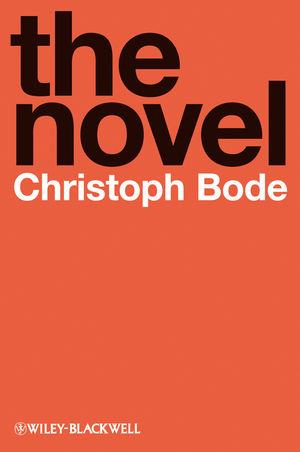The Novel: An IntroductionISBN: 978-1-4051-9447-1
Paperback
312 pages
February 2011, Wiley-Blackwell
 |
||||||
Translator’s Note.
Acknowledgments.
1. Beginnings: What Do You Expect?
1 Beginning.
2 Sense and Meaning.
3 Rules of the Game.
4 Links and Connections.
5 I.
6 First Sentences: Enticements.
2. The Modern European Novel: Predecessors, Origins, Conventions, Sub-Genres.
1 Dangers and Allurements of Novel-Reading: What’s Novel about the Novel?
2 Fact and Fiction: No Man is an Island.
3 Fiction, Illusion, Realism.
4 Variety of Types: Triumph of Polyphony.
3. The Object of Every Analysis: The How of the What (Discourse and Story).
4. Time.
1 Narrative Time and Narrated Time.
2 Order.
3 Frequency.
4 Tense and Narrative.
5. Characters.
1 Character Conception.
2 Character Portrayal.
6. Teutonic Rosette or Gallic Taxonomy? Identifying the Narrative Situation.
1 Prologue.
2 Stanzel’s Typological Circle: A Preliminary Overview.
3 Splitting the In-dividual: The First-Person Narrative Situation.
4 The Impossibility of the Familiar: The Authorial Narrative Situation.
5 Abolishing Narrative in Narrative – the Illusion of Immediacy: The Figural Narrative Situation.
6 Genette’s Narrative Theory: The Basics.
7 Who Speaks? – Voice.
8 Who Perceives? – Focalization.
9 Internal – External: Advantage Genette?
10 Coda.
11 The Novel as Atonement.
7. Multiperspectivity, Unreliability, and the Impossibility of Editing Out the Gender Aspect.
1 Multiperspectivity.
2 Unreliable Narration.
3 The Narration’s Gender.
8. Now You See It, Now You Don’t: Symbolism and Space.
9. The End of the Novel and the Future of an Illusion.
1 Experience, Storytelling, (Hi)stories.
2 Meaning Orientation.
3 Novels: Allegories of Telling.
References.
Further Reading.
Index of Authors and Critics.



